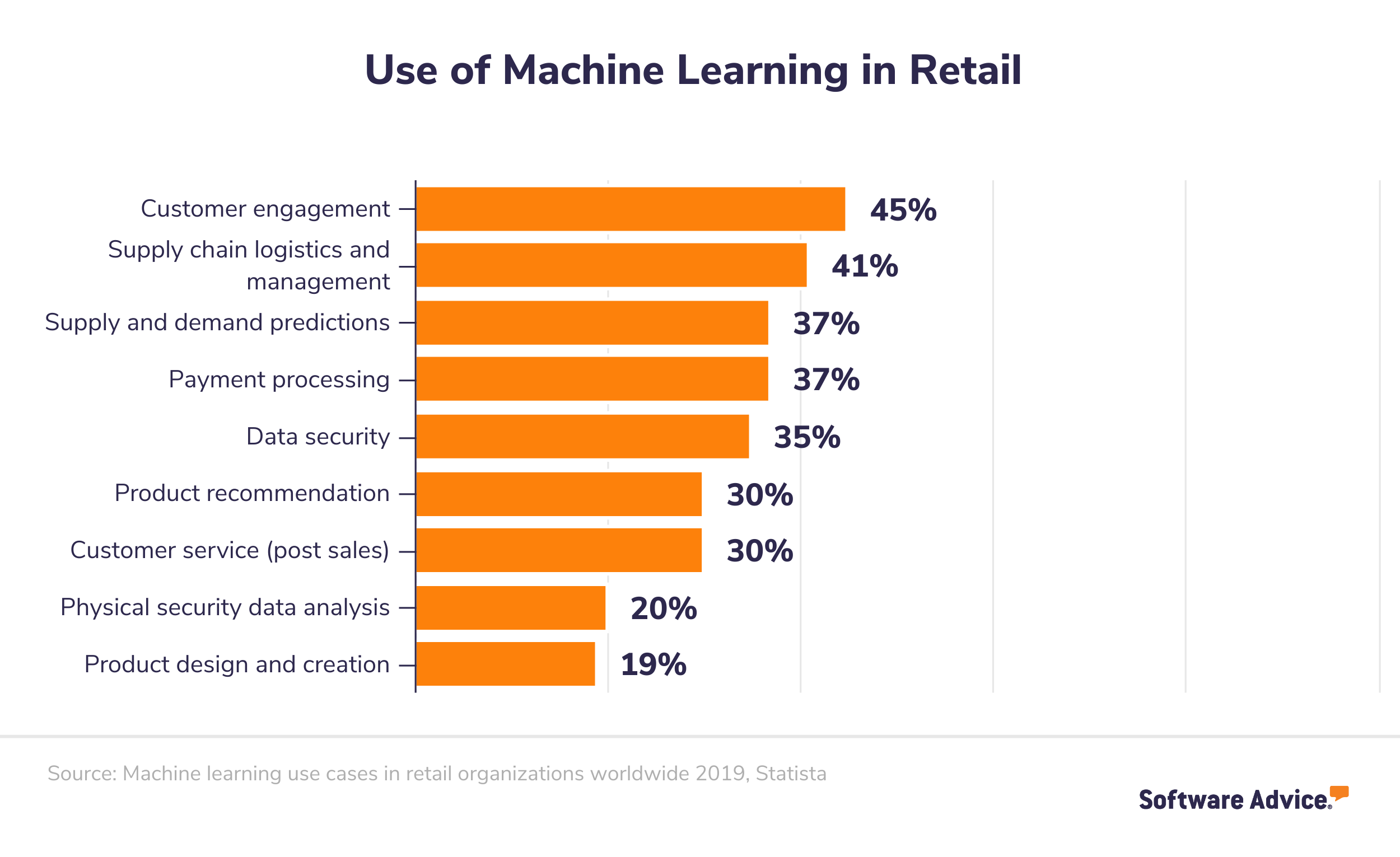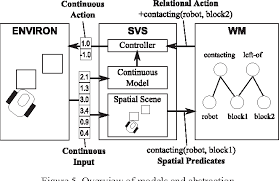
Artificial intelligence is the study of how machines can make decisions and make predictions based on data. Several terms are used in the field. Natural language processing and Conversational AI are some of the terms that are used. This is not a complete list, but it should give a general idea of the technology's workings.
Machine learning
Machine learning is a technique for training computers to make predictions using past data and similar inputs. Deep learning is another name. This process involves creating algorithms that mimic the structure of the human brain and learn from experience to make predictions. The algorithms used in machine learning are called artificial neural networks.
Machine learning is an effective tool that can be used in many industries including financial services and pharmaceuticals. Its applications range from identifying vulnerabilities in data security to predicting future high-risk activities. It is especially useful to industry verticals that process large volumes of data. The machine learning process can generate insights from the data in real time, improving companies' efficiency and giving them an edge over their competition.
Natural language processing
Natural language processing (NLP) is an essential building block of conversational systems and artificial intelligence. It allows computers to interpret human speech and query data using the information they hear. It is used in automatic translations, chatbots and voice assistants. Natural language processing algorithms use mathematical processes and comparisons to clean up user input and recognize information that can be used to improve comprehension.

Natural language processing has a long tradition. Alan Turing's 1950 book "Computing Machinery and Intelligence" included the Turing Test, an automated generation and interpretation natural language. Until the 1990s, NLP was largely rule-based, and linguists had to develop rules to help computers understand the language.
Conversational AI
Conversational AI (also known as artificial intelligence) is a type that can respond to and learn from human conversations. It uses interfaces for programming (APIs) in order to comprehend natural language and provide the best output. This technology can be used for answering questions, providing self-service for consumers, and improving employee efficiency.
Conversational AI, which is still in its infancy, is an evolving field. The field is still in its infancy and there are many challenges and obstacles. Conversational AI needs to learn how to deal with human communication's nuances, which can be complex, full of humor, sarcasm and variations in tone or accent.
Backpropagation
Backpropagation, a mathematical process that allows a neural net to regress back into a prior state using intermediate quantities, is called backpropagation. Backpropagation is different from gradient descent, which results in local minima instead of global minima. It makes use of activation function known at network design time. It was popularized in the 2000s, but it has regained popularity with the introduction of GPU-based computing systems. It has been used since then to understand many phenomena related language learning.
Seppo Linnainmaa, who was a Finnish master's scholar, is the person who gave birth to the backpropagation principle. He published a 1970 paper which resembles today's back-propagation process. Linnainmaa, however, didn't refer to neural networks at the time. Jurgen Schmidhuber's article traces the history of the concept in more detail.

IA (Intelligent Automation)
IA (Intelligent Automation), is a tool that allows companies to improve productivity and lower costs by automating their processes. It uses data to verify accuracy and ensures that processes scale easily without compromising quality, straining staff or causing unnecessary strain. This type of automation also makes it possible to improve customer service and experience while reducing human error. Intelligent automation has many uses across many industries.
Intelligent automation plays an integral part in the real estate industry's sales process. It engages buyers prior to requiring the involvement by a real agent, predicts and avoids loan defaults, and it engages them before they even need it. It allows you to check and create rental applications. This helps increase your business opportunities.
FAQ
Is there another technology which can compete with AI
Yes, but not yet. There are many technologies that have been created to solve specific problems. However, none of them can match the speed or accuracy of AI.
Is Alexa an AI?
The answer is yes. But not quite yet.
Amazon's Alexa voice service is cloud-based. It allows users interact with devices by speaking.
The Echo smart speaker first introduced Alexa's technology. However, since then, other companies have used similar technologies to create their own versions of Alexa.
These include Google Home as well as Apple's Siri and Microsoft Cortana.
Who is the inventor of AI?
Alan Turing
Turing was conceived in 1912. His mother was a nurse and his father was a minister. He was an excellent student at maths, but he fell apart after being rejected from Cambridge University. He started playing chess and won numerous tournaments. After World War II, he worked in Britain's top-secret code-breaking center Bletchley Park where he cracked German codes.
1954 was his death.
John McCarthy
McCarthy was born in 1928. He studied maths at Princeton University before joining MIT. There he developed the LISP programming language. By 1957 he had created the foundations of modern AI.
He died in 2011.
How does AI impact the workplace
It will change the way we work. We'll be able to automate repetitive jobs and free employees to focus on higher-value activities.
It will improve customer services and enable businesses to deliver better products.
It will allow us future trends to be predicted and offer opportunities.
It will enable organizations to have a competitive advantage over other companies.
Companies that fail AI adoption are likely to fall behind.
Where did AI get its start?
Artificial intelligence was created in 1950 by Alan Turing, who suggested a test for intelligent machines. He suggested that machines would be considered intelligent if they could fool people into believing they were speaking to another human.
John McCarthy wrote an essay called "Can Machines Thinking?". He later took up this idea. John McCarthy, who wrote an essay called "Can Machines think?" in 1956. He described the difficulties faced by AI researchers and offered some solutions.
What is the role of AI?
An algorithm is a set or instructions that tells the computer how to solve a particular problem. An algorithm can be expressed as a series of steps. Each step is assigned a condition which determines when it should be executed. A computer executes each instructions sequentially until all conditions can be met. This repeats until the final outcome is reached.
Let's say, for instance, you want to find 5. If you wanted to find the square root of 5, you could write down every number from 1 through 10. Then calculate the square root and take the average. However, this isn't practical. You can write the following formula instead:
sqrt(x) x^0.5
You will need to square the input and divide it by 2 before multiplying by 0.5.
The same principle is followed by a computer. The computer takes your input and squares it. Next, it multiplies it by 2, multiplies it by 0.5, adds 1, subtracts 1 and finally outputs the answer.
Statistics
- The company's AI team trained an image recognition model to 85 percent accuracy using billions of public Instagram photos tagged with hashtags. (builtin.com)
- Additionally, keeping in mind the current crisis, the AI is designed in a manner where it reduces the carbon footprint by 20-40%. (analyticsinsight.net)
- In 2019, AI adoption among large companies increased by 47% compared to 2018, according to the latest Artificial IntelligenceIndex report. (marsner.com)
- More than 70 percent of users claim they book trips on their phones, review travel tips, and research local landmarks and restaurants. (builtin.com)
- That's as many of us that have been in that AI space would say, it's about 70 or 80 percent of the work. (finra.org)
External Links
How To
How to set Alexa up to speak when charging
Alexa, Amazon's virtual assistant can answer questions and provide information. It can also play music, control smart home devices, and even control them. You can even have Alexa hear you in bed, without ever having to pick your phone up!
With Alexa, you can ask her anything -- just say "Alexa" followed by a question. She'll respond in real-time with spoken responses that are easy to understand. Plus, Alexa will learn over time and become smarter, so you can ask her new questions and get different answers every time.
Other connected devices, such as lights and thermostats, locks, cameras and locks, can also be controlled.
Alexa can adjust the temperature or turn off the lights.
Setting up Alexa to Talk While Charging
-
Step 1. Turn on Alexa Device.
-
Open the Alexa App and tap the Menu icon (). Tap Settings.
-
Tap Advanced settings.
-
Select Speech Recognition
-
Select Yes, always listen.
-
Select Yes, only the wake word
-
Select Yes to use a microphone.
-
Select No, do not use a mic.
-
Step 2. Set Up Your Voice Profile.
-
Choose a name for your voice profile and add a description.
-
Step 3. Step 3.
Use the command "Alexa" to get started.
For example: "Alexa, good morning."
Alexa will answer your query if she understands it. For example, "Good morning John Smith."
Alexa won’t respond if she does not understand your request.
After these modifications are made, you can restart the device if required.
Notice: If the speech recognition language is changed, the device may need to be restarted again.